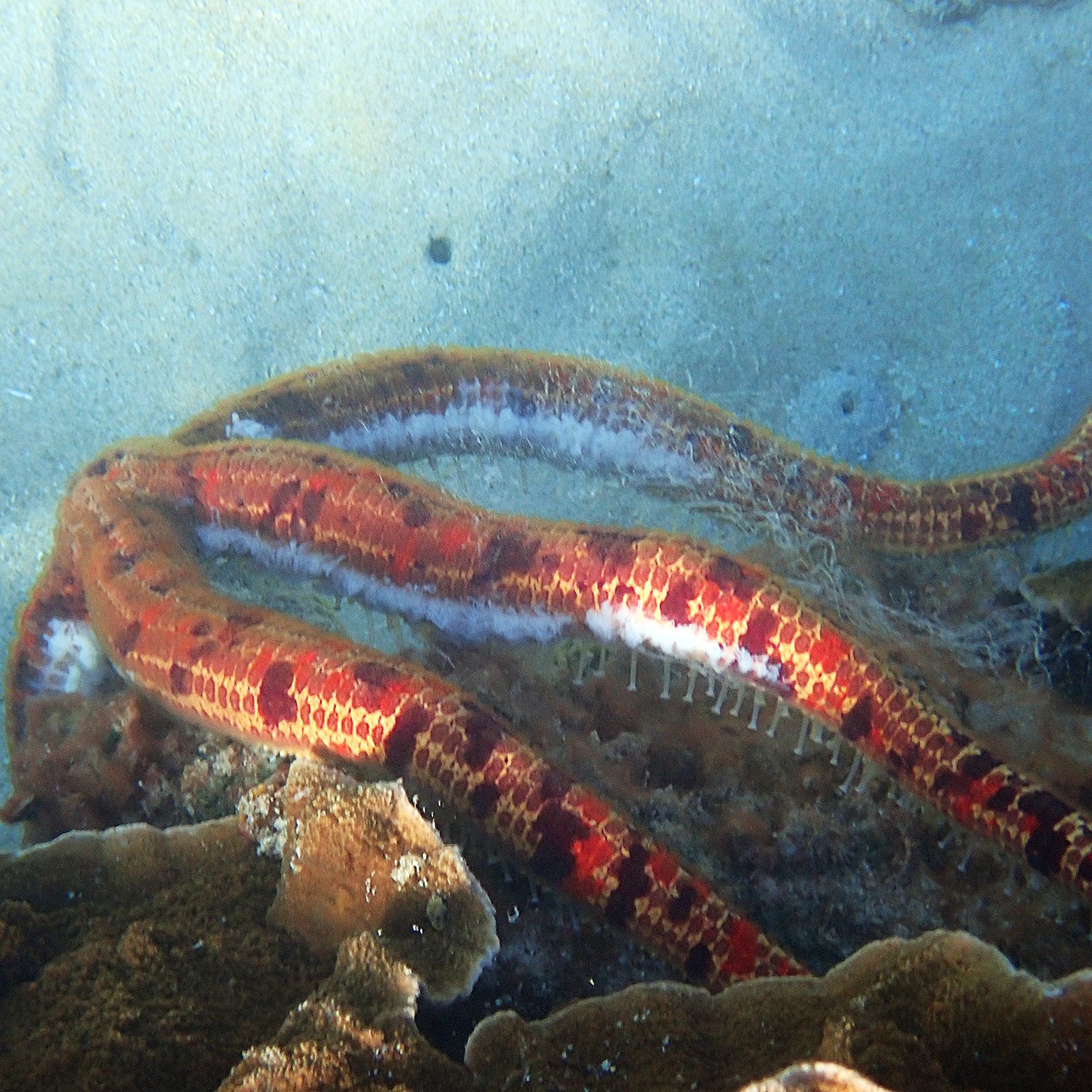On 6 May 2023, the day after the full moon and at low tide, I witnessed an enormous Leach’s sea star, Leiaster leachi, as it broadcast its gametes into the water column. These star fish have been recorded as large as 73 cm in diameter. This one was definitely right up there.
Sea stars are either female or male. Just by looking at this one it is impossible to tell which it is. But females will be broadcasting eggs from their gonads, and the males, sperm. The gonads are located in each arm. Hopefully, nearby, another Leach’s sea star will be doing exactly the same thing at the same time, and the eggs and sperms will meet and form larvae.
A baby sea star’s parents will never meet. For reproduction to occur, it’s important that sea stars of the same species are synchronised. The usual triggers for spawning are factors such as the tides and water temperature. To help boy meet girl, specific proteins are released by both the eggs and sperm so they know they are hitching themselves to the right species. In other words, they follow a chemical trail to their target.
While what I was witnessing here was sexual reproduction, sea stars can also reproduce asexually, too, by regenerating an entire body. They can also regrow lost limbs.
When I first came across this sea star I honestly thought it was in distress, then I wondered if it was dead and was breaking down, but usually that attracts a host of fish, and that definitely wasn’t happening here. THEN I twigged what was happening. What an amazing WOW moment! And what a privilege to witness such a rare event.
Here are some photos, below. You can click on each one to enlarge. In each one, I am looking directly down from the surface at the sea star, and it is clinging to the side of a coral bommie. You can see that as it releases its gametes it stands proud of the reef, twisting and turning slightly to enable their release.
At the bottom of this post is a short video clip.
You can read more about sea stars in my blog post Sea stars? Starfish? What’s the difference?
Further reading
The weird and wonderful world of breeding sea stars (used as a source for this post)









